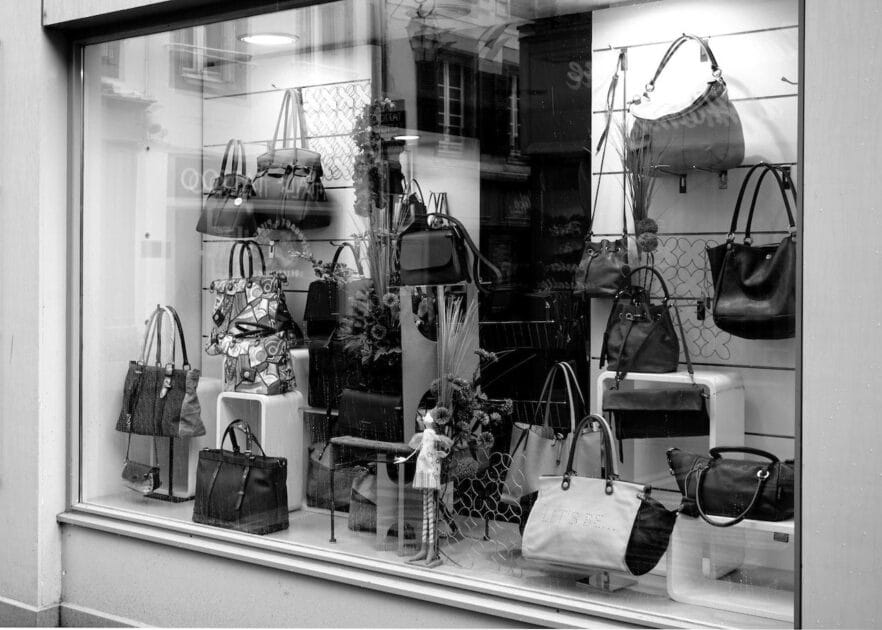You’ve just splurged on that gorgeous handbag you’ve been eyeing for months, and it’s the perfect accessory to every outfit. But there’s a sneaky villain lurking in the shadows, ready to ruin your prized possession: color transfer. It’s the heart-sinking moment when you realize your vibrant jeans have left their mark on your new, light-colored tote.

Don’t let color transfer dampen your style or your spirits! Protecting your handbag isn’t just about careful use; it’s about smart preventative measures. With a few key tips and tricks, you can keep your handbag looking as pristine as the day you unboxed it. Let’s dive into the simple steps you can take to shield your investment from unwanted stains.
Understanding Color Transfer
Color transfer happens more often than you might expect, and understanding it is key to protecting your handbag. Essentially, it’s when dye from one item rubs off onto another. This often occurs between items that come in constant contact with each other, like your handbag and your clothing.
Let’s break down the common culprits:
- Denim: Known for its sturdy fabric, denim can be a handbag’s worst enemy due to its loose dye particles.
- Printed Materials: Newspapers, magazines, or anything with print can transfer ink when pressed against your handbag.
- Leather: Dye from a new leather jacket or belt may easily rub off onto your handbag.
Environmental factors play a role as well. Heat and moisture can exacerbate color transfer, making your handbag more susceptible during the summer or in rainy weather.
Now you might wonder how often this happens and with what materials. Here’s a quick glance:
| Material | Likelihood of Color Transfer |
|---|---|
| Denim | High |
| Leather | Moderate to High |
| Printed Items | Moderate |
| Synthetic Fabrics | Low to Moderate |
Be particularly cautious with light-colored handbags. They are more prone to visible stains.
As for texture, suede and nubuck materials absorb dyes more readily than others due to their porosity. Smooth leathers and synthetics offer a bit more resilience but aren’t immune.
Understanding the mechanics behind color transfer empowers you to take proactive measures. Regular maintenance and smart usage can go a long way. Think about what your handbag comes into contact with and adjust accordingly. Avoid placing your prized possession on newspapers or wearing a new pair of jeans with a light-colored bag.
In essence, keeping your handbag vibrant and stain-free comes down to awareness. Monitor the materials and conditions your accessory encounters daily. With this knowledge, you’re better prepared to prevent the dreaded color transfer.
Choosing the Right Handbag Material
When you’re on the hunt for a new handbag, the material is a key factor in preventing color transfer. Leather, especially top-quality, has a resistant surface that wards off stains with proper care. However, lighter leathers might still pick up dyes from dark clothing. For a carefree option, consider patent leather; its glossy finish is practically immune to color transfer.
If you’re eyeing a suede bag, be aware it’s like a color magnet. Suede’s porous nature means it absorbs oils and dyes effortlessly, so it might not be the best if you’re aiming to keep color transfer at bay.
In contrast, synthetic materials such as nylon or vinyl are less receptive to color bleeding. They’re often easier to clean and offer durability. Here’s a quick rundown of material susceptibility to color transfer:
| Material | Susceptibility to Color Transfer |
|---|---|
| Leather | Low with proper care |
| Patent Leather | Very Low |
| Suede | High |
| Synthetics | Low |
Another alternative is canvas, often used in designer totes. While canvas is sturdy, it can be prone to color transfer if not treated with a protective coating. Look for pre-treated options or apply a fabric guard yourself.
Remember, light colors show stains and color transfers more than dark shades. Opt for darker hues if maintenance is a concern. But if a light-colored bag has caught your eye, choose those made with materials that respond well to cleaning.
Lastly, microfiber is an underrated hero. It’s lightweight, comes in various textures, and is simpler to maintain. Microfiber handbags resist color transfer effectively, and they can often be cleaned with just a wipe down, making them a hassle-free choice for everyday use.
Pick your bag not just for style but also with material mindfulness. Your ideal handbag balances fashion with functionality, all while staying pristine from unwanted color marks.
Prepping Your Handbag Before Use
Before you step out flaunting your new handbag, you’ll want to prep it to fend off any potential color transfer. Taking preventive measures is key to maintaining the pristine look of your accessory.
Clean the Surface Beforehand: It’s crucial to start with a clean slate. Gently wipe the surface of your handbag with a soft, dry cloth to remove any dust or dirt. For leather bags, use a cleaner specifically designed for the material. This ensures that the protective products you’ll apply adhere better and more evenly.
« How Do You Measure a Handbag? Find the Perfect Fit for Every Occasion
How Long Do Handbags Last? Unveil the Secrets to Their Longevity »
Apply a Protector: Invest in a high-quality protector spray. These sprays create an invisible barrier on your handbag that wards off moisture and stains. Make sure the product is suitable for your handbag’s material. Apply evenly, keeping the nozzle a safe distance from the surface to prevent splotches. Allow it to dry completely before the first use.
If your handbag is suede, consider a suede protector that’s specifically formulated to preserve its soft texture while enhancing its resistance to stains and color transfer.
Regular Maintenance: Remember that prepping your handbag isn’t a one-off task. Regular maintenance prolongs the protective effects:
- Reapply protector sprays every few months or according to the frequency of use.
- For daily grime, wipe your bag with a microfiber cloth. This habit prevents build-up that can contribute to color transfer issues later.
Avoid Contact with Risky Materials: Keep your handbag away from materials that bleed color, like denim or printed materials. Be mindful about where you place it, avoiding rough surfaces that could scratch and make the handbag more vulnerable to color transference.
By prepping your handbag properly, you’re safeguarding your investment and ensuring that it stays as vibrant and immaculate as the day you bought it. Remember, a little effort goes a long way in keeping your handbag free from unsightly blemishes.
Avoiding Color Transfer from Clothes
When you’re rocking a new handbag, the last thing you want is for your favorite clothes to ruin that perfect look with color transfer. Dye transfer from clothing is a common culprit — particularly with denim and other dark fabrics that haven’t been properly washed.
Be proactive; wash these items before they get a chance to mingle with your handbag. Stick to cold water washes and add a color-catcher sheet to trap errant dyes. Remember that some clothes are repeat offenders. They’ll need more than one wash to become safe companions for your handbag.
When shopping for new clothes, consider the fabric’s potential to transfer color. High-quality fabrics with good colorfastness ratings are less likely to cause headaches. Always check the care label; it’ll often warn you if the item is prone to color bleeding. If it does, think twice about wearing it with your handbag until it’s gone through several wash cycles.
- Wear light colors with your handbag to minimize risk.
- Place a barrier, like a scarf, between your bag and clothing.
- Briefly test colorfastness of new clothes by rubbing with a white cloth.
When you’re in a pinch and have to wear that new pair of jeans, you can treat the fabric. Apply a fixative spray to create a barrier against dye transfer. It might not be foolproof, but it can help in a pinch.
Contrast can be your friend or foe. It’s not just about the clothes either; consider what you place inside the bag. A dark wallet or cosmetic kit can be as guilty of color transfer as a brand-new pair of jeans. Opt for pouches and wallets in light colors or materials that won’t shed their hue onto your handbag’s interior.
Remember, always test any new product on an inconspicuous area of your handbag and clothing before full application. You wouldn’t want to trade one problem for another. Keep your handbag in great shape and looking fresh by staying vigilant and following these simple tips.
Cleaning and Caring for Your Handbag
Proper upkeep is crucial to extending your handbag’s lifespan. To start, wipe your bag with a dry cloth regularly to remove surface dirt and dust. When it comes to deeper cleaning, always refer to the manufacturer’s instructions; different materials require different care. Generally, a mild soap and water solution applied with a soft cloth does the trick for most.
If you encounter a stain, act fast. Use a stain-specific remover appropriate for your handbag’s material, and remember to test it on a small, inconspicuous spot first. Leather handbags benefit from specialized leather conditioners that keep the material supple.
For storage, stuff your handbag to maintain its shape and store it in a dust bag to protect it from the elements. Avoid plastic bags as they can trap moisture, leading to unwanted issues like mold.
Rotate your handbags often. This not only gives you a fresh look but also prevents premature wear and tear on any one item. Sunlight can be both friend and foe—while it’s great for airing out your bag, prolonged exposure can lead to fading. Keep your handbags out of direct sun when not in use.
For handbags that aren’t used regularly, check on them periodically. This is vital to catch any potential issues early on, such as color transfer or moisture buildup.
Use desiccants like silica gel packets inside your handbag when storing. They’ll absorb excess moisture and help in preventing the growth of mold and mildew.
Remember, the key to keeping your handbag in top condition is regular care and gentle cleaning methods. Your vigilance will ensure your cherished accessory remains pristine and vibrant for years.
Conclusion
You’ve got the know-how to keep your handbag looking as good as new. Remember, a little effort goes a long way in preventing color transfer and maintaining your bag’s pristine condition. Regular wipes, the right cleaning agents, and smart storage will do wonders. Don’t forget to give your bags a break by rotating them and keep an eye on those you don’t use often. With these habits, you’ll ensure your handbag stays by your side, stylish and spotless, for years to come. Happy caring for your cherished accessory!
Frequently Asked Questions
How can you prevent color transfer on handbags?
To prevent color transfer, avoid placing your handbag against dark-colored clothing, keep it dry, and use a protective spray designed specifically for the handbag’s material.
What are some cleaning tips for handbags?
For cleaning handbags, regularly wipe the surface with a dry cloth, use a mild soap with water for deeper cleans, employ stain-specific removers as needed, and finish with a leather conditioner for leather bags.
Why is proper storage important for handbags?
Proper storage maintains the handbag’s shape and protects it from dust and damage. It involves stuffing the bag to retain its form and keeping it in a dust bag.
How often should you clean your handbag?
Regular cleaning is advised, but the frequency depends on usage. A quick wipe down with a dry cloth can be done weekly, while deeper cleans may be less frequent.
What should you avoid to maintain the handbag’s condition?
To maintain your handbag’s condition, avoid overexposure to sunlight, don’t overload the bag, and keep it away from moisture and potentially color-transferring materials.










